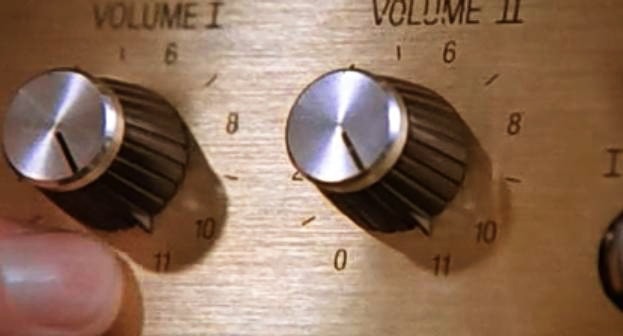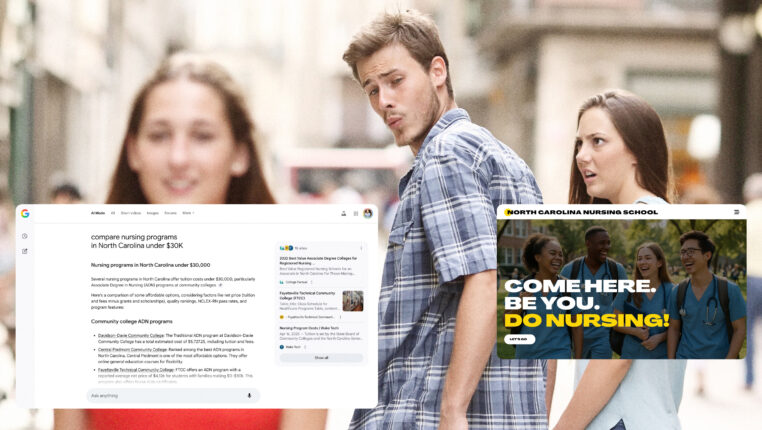No matter your industry, the importance of your organization’s website cannot be overstated. It’s the company’s public face, is always open, and has the potential to convert casual visitors into loyal customers.
With this in mind, when it comes time to redesign or build a brand new website, who you decide to lead the effort is one of the most critical decisions you’ll make. But how do you even start the process? For many, the first step is creating a request for proposal (or RFP).
This article will walk you through how to write a website redesign RFP that will:
- Provide key information to agencies that will let them build better and more accurate proposals
- Prioritize your feature wishlist to align with your goals
- Attract an agency you’ll actually enjoy working with
- Help you avoid surprises
- Create a better end result
We’ve also included a free, customizable website RFP template download that outlines all the information you’ll need.

As an interactive agency, we’ve seen a lot of RFPs over the years, and they are not all created equal. By putting serious thought and consideration into the information you include in the website redesign RFP, you will end up saving yourself a substantial amount of time later on answering agencies’ questions.
By including information about your goals, feature requirements, budget, and timelines in an organized way, you’ll be presenting yourself as a client with knowledge and respect for how an agency can best help you achieve them – in other words, a client that top agencies will want to work with! While many agencies rely on RFPs to bring in new business, responding to them takes a lot of time, assumes you have all the answers before you even start, and encourages unnecessary games between parties.
That said, rather than a laundry list of requirements and tactics, your website RFP should be used to create an opportunity for agencies to help you solve a problem. We’ve had many conversations with clients where they are asking for tactics that probably aren’t the best way to achieve their goals.
Digital trends change fast; it’s nearly impossible to stay on top of every new development. Clients win by staying open-minded and willing to take advantage of new techniques. After all, you are hiring an agency for their expertise – by limiting them only to the solutions you’ve already come up with excludes the vastness of their creativity and experience.
If you’re open to all possibilities, the RFP should really be framed as the start of a conversation. Building a successful website requires personal chemistry (you’ll be spending the next several months working closely with these people, after all), so basing this decision solely off of a single proposal document that was emailed to you likely isn’t the best way to achieve your goals.
How to Write a Website Redesign RFP
First, let’s cover the base level of information every RFP should include.
- Intro/Summary: In a single paragraph, detail why you are issuing this RFP and what you looking for. Is this a redesign or an update? Vendors will read this paragraph to make sure what you’re looking for matches their skills.
- Context: Give us the 10,000-foot view that will allow us to see how this project fits into the entire organization’s workflows and goals. Why you want to take on this project is likely just as important as what you want to do.
- Prioritized Goals: What business goals do you want this website to influence? To be clear, a website goal is NOT “Create a dynamic and intuitive website that will engage and excite our users.” Any design agency that does their due diligence will create a website that is intuitive and engaging. A goal is also not what you want the website to do (site functionality comes later). Instead, focus on your desired outcomes from this project. These should be SMART goals, such as:
- Increase customer leads generated by the website from 1,500/month to 2,500/month by June 30, 2017
- Increase site visits by 50% (1,000/month to 1,500 per month) for our new product launch by September 30, 2018
- Drive $250,000 in donations in support of our capital campaign by end of year
- Project Team: Include the names and titles of all people who will be involved in this project; specifically, whose approval will be needed at each step. This helps the agency draft an appropriate communication plan for the project that will make everyone’s job easier.
- Users: Who are you trying to reach with your website? Include not only their demographic information, but also their problems that visiting your website can potentially resolve. Agencies will typically evolve these users into user personas, which will be used to craft a content strategy and custom web experiences.
- Desired Process: If there are specific steps you want to take or feel like you can skip, feel free to call that out. For instance, if you have recently gone through an in-depth user research study that can be handed over to the new team, let agencies know so they don’t assume they’ll need to start from scratch with user surveys and interviews in order to make their strategic recommendations.
- RFP Timeline: Use this section to tell agencies when they need to send you their responses. Include when they’ll be hearing back if they’re a finalist and timing for follow-up meetings (more on that later). Finally, let everyone know when you expect to make a decision.
- Project Timeline: Let everyone know at the beginning when you want the project to be complete and if there’s something that is driving that date, such as a product launch or event.
- Budget: Many clients are hesitant to provide a budget at the outset. However, sharing this information at the outset will help agencies provide much better recommendations and will save everyone time. Agencies that are way outside your price point can politely excuse themselves, while vendors that are a good fit have freedom to suggest creative ways to achieve more of your goals. If you don’t know your budget, you probably aren’t ready to send out a website redesign RFP. Also, if you have a payment schedule or fiscal year limitations, this would be a great time to disclose those.
- Existing Website Info: Everyone knows your current website isn’t perfect (that’s why you’re writing a website redesign RFP). But use this section to explain what elements are working and what your biggest pain points are.
- Functionality Requirements: Detail all the functionality that you’ll need for your new website, being specific as possible. This list can include what the website should do as well as key content types. Some functionality examples could include:
- Integrations/Technology Requirements: List out and detail any functionality that is essential to this project being a success. Does the site need to be built in a specific CMS like WordPress or Drupal? Why? Is there a third-party system like Salesforce or Blackbaud that needs to be integrated to your site? How are you using them? Are you hosting the site, or do you need external hosting?
- Proposal Requirements: Now that you’ve bared your soul, this is where you can ask your potential vendors everything you need to know in order to make an informed decision. The more specific your website redesign questions are, the easier it will be for you to compare vendors’ answers when you start getting responses.
- Responsive layout
- Ability to edit key pages through a content management system
- Events calendar with registration system
- Display custom content based on user’s web browsing history
- Interactive map of office locations
OK, so now you have filled in your website redesign RFP outline, you’re ready to send it out to all your agency friends, right? Maaaaybe…
Let’s Crank This Up to 11
If you really want to impress the website RFP recipients and show that you’re organized, here’s some extra credit info you can include that will help your responses
- Competitive Set: List the three competitors that most frequently take business from you. Agencies can compare your positioning and see how they address similar obstacles to inform how your new website can stand out.
- Comparables: In this section, list any websites that can provide inspiration for innovative ways that other companies that aren’t in your industry accomplish similar issues. For example, if you work for a non-profit whose goal is to increase online donations, you could list e-commerce or publishing sites that do a great job of using different content and user-flows to improve conversions rates.
- Style Guide: If your company has an established web style guide, include it here to put parameters around the design process.
- Marketing Materials: Include any print, video, or other materials that you plan to continue using to ensure the website carries over a consistent look. Any notes on which tactics are working or under-performing would also be helpful.
This Is Only the Beginning
As you may have heard me say previously, a website redesign RFP should be the beginning of a conversation that dives into your company’s goals, users, and messaging. If you start with a template (even ours), don’t be shy about editing it to better fit your needs. This will put you and the agencies you get in touch with at a much better starting point.
Do your research and send your website RFP to agencies with services and work samples that match your needs.
Use the responses you receive to select a group of finalists that you can bring in and meet in person. You need to select an agency that fits your personality – and that’s not possible to judge through email alone.
If you follow these tips, you’ll be well on your way to a great new website. Throughout the process, you’ll learn a lot about your users, your business, and digital strategy – it should be fun!
Now, for the part you’ve been waiting for… our Website Redesign RFP template is linked below. Feel free to customize it to fit your needs. We’re excited to talk about your next project!




